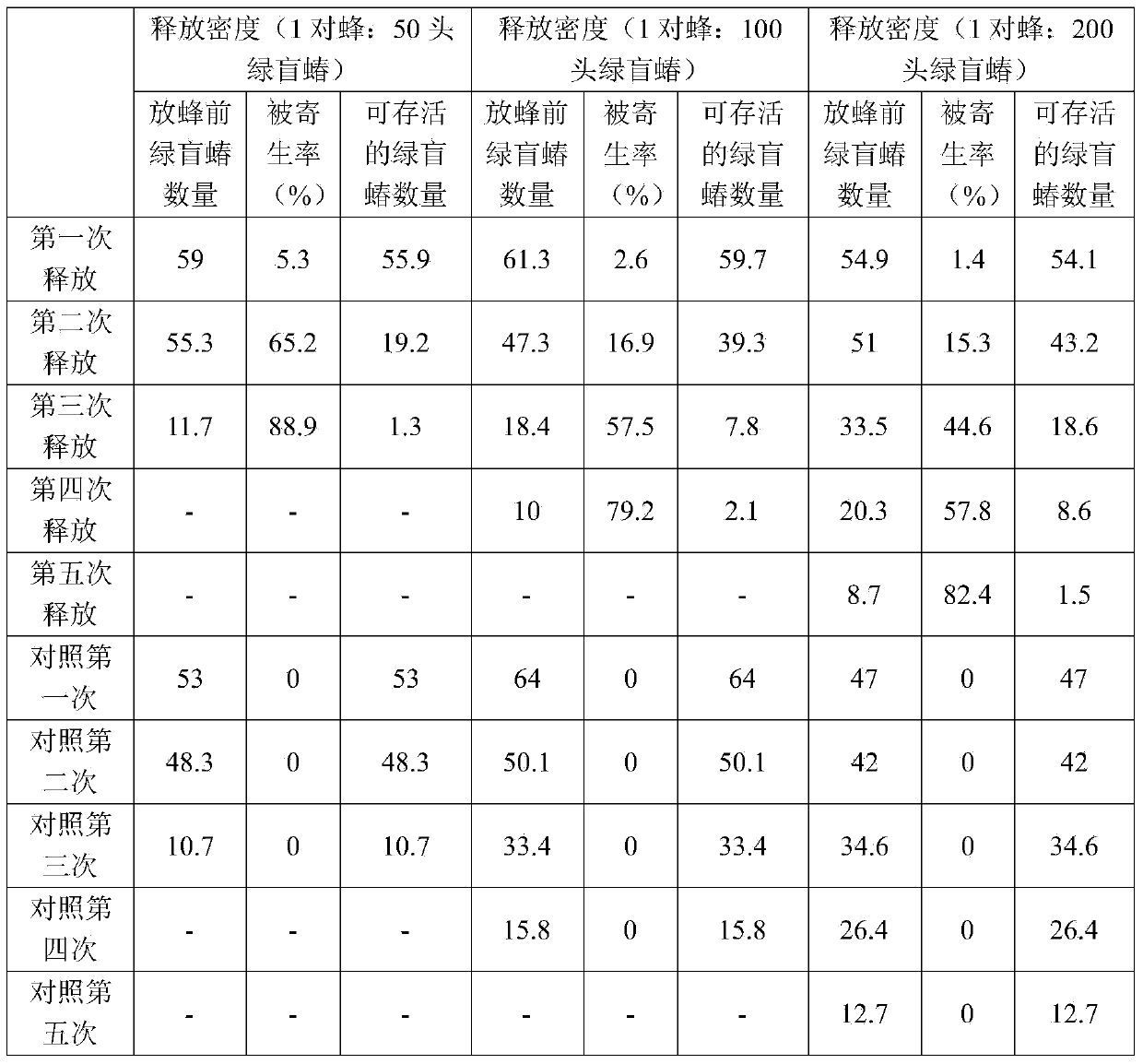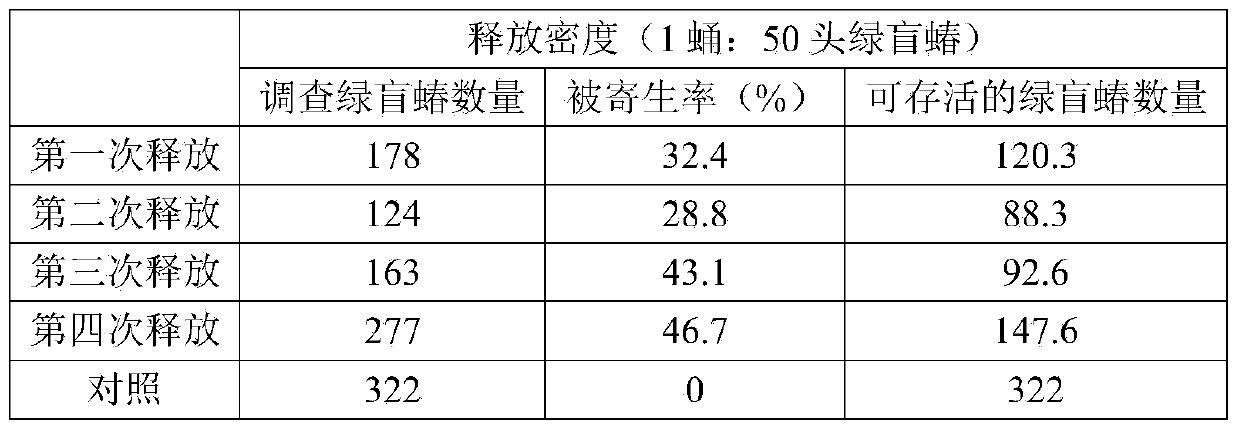Method for biologically preventing green plant bugs by peristenus spretus in winter jujube orchard
A technology for the red-necked lygus and green ligus, which is applied in applications, hunting equipment, animal husbandry, etc., can solve problems such as the difficulty in obtaining the effect of biological control of the green ligus, and achieve cost-saving feeding, high-efficiency population size, and control Occurrence and Harmful Effects
- Summary
- Abstract
- Description
- Claims
- Application Information
AI Technical Summary
Problems solved by technology
Method used
Image
Examples
Embodiment 1
[0019] 1. Preparation of natural enemy insects
[0020] 2-3 days after the new eclosion of the red-necked wasps, select the robust red-necked wasps, especially the number of female bees, which should account for 50% or more of the parasitoid population, and place them on a transparent plexiglass Inside the insect cage (30cm×30cm×40cm).
[0021] When the red-necked chrysalis is ready to pupate, spread 1.5-4 cm thick wet vermiculite on the bottom of the insect rearing box (13cm×13cm×14cm) (hand hold the vermiculite tightly, no water drips out), and put it on the vermiculite. The upper part raises the green Lygus parasitized by the red-necked wasp, so that the mature larvae of the red-necked wasp can freely drill out of the main body wall of the host and pupate in the vermiculite. Each insect box can hold 80-150 pupae. 7 days after the pupation of the parasitic wasp is completed, the vermiculite containing the parasitoid wasp pupae can be taken out for release.
[0022] 2. Adu...
Embodiment 2
[0030] 1. Preparation of natural enemy insects
[0031] 2-3 days after the new eclosion of the red-necked wasps, select the robust red-necked wasps, especially the number of female bees, which should account for 50% or more of the parasitoid population, and place them on a transparent plexiglass Inside the insect cage (30cm×30cm×40cm).
[0032] When the red-necked chrysalis is ready to pupate, spread 1.5-4 cm thick wet vermiculite on the bottom of the insect rearing box (13cm×13cm×14cm) (hand hold the vermiculite tightly, no water drips out), and put it on the vermiculite. The upper part raises the green Lygus parasitized by the red-necked wasp, so that the mature larvae of the red-necked wasp can freely drill out of the main body wall of the host and pupate in the vermiculite. Each insect box can hold 80-150 pupae. 7 days after the pupation of the parasitic wasp is completed, the vermiculite containing the parasitoid wasp pupae can be taken out for release.
[0033] 2. Adu...
Embodiment 3
[0041] 1. Preparation of natural enemy insects
[0042] 2-3 days after the new eclosion of the red-necked wasps, select the robust red-necked wasps, especially the number of female bees, which should account for 50% or more of the parasitoid population, and place them on a transparent plexiglass Inside the insect cage (30cm×30cm×40cm).
[0043] When the red-necked chrysalis is ready to pupate, spread 1.5-4 cm thick wet vermiculite on the bottom of the insect rearing box (13cm×13cm×14cm) (hand hold the vermiculite tightly, no water drips out), and put it on the vermiculite. The upper part raises the green Lygus parasitized by the red-necked wasp, so that the mature larvae of the red-necked wasp can freely drill out of the main body wall of the host and pupate in the vermiculite. Each insect box can hold 80-150 pupae. 7 days after the pupation of the parasitic wasp is completed, the vermiculite containing the parasitoid wasp pupae can be taken out for release.
[0044] 2. Adu...
PUM
 Login to View More
Login to View More Abstract
Description
Claims
Application Information
 Login to View More
Login to View More - R&D
- Intellectual Property
- Life Sciences
- Materials
- Tech Scout
- Unparalleled Data Quality
- Higher Quality Content
- 60% Fewer Hallucinations
Browse by: Latest US Patents, China's latest patents, Technical Efficacy Thesaurus, Application Domain, Technology Topic, Popular Technical Reports.
© 2025 PatSnap. All rights reserved.Legal|Privacy policy|Modern Slavery Act Transparency Statement|Sitemap|About US| Contact US: help@patsnap.com


